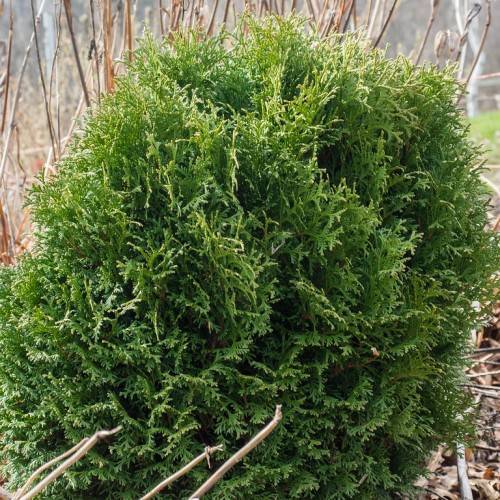
American arborvitae
Thuja occidentalis 'Hetz Midget'
Cycle:
Perennial
Watering:
Frequent
Hardiness Zone:
2 - 7
Flowers:
Flowers In Spring
Sun:
Full sun, Part sun/part shade
Soil:
Sandy Loamy Clay Rocky
Cones:
Yes
Leaf:
Yes
Growth Rate:
Moderate
Maintenance:
Low
Drought Tolerant:
Yes
Care Level:
Low
watering
American arborvitae should be watered deeply and consistently during the growing season (spring and summer). It is best to water every 7 to 14 days, allowing the soil to dry out slightly between watering. During extended periods of hot, dry weather, the plant may need to be watered every 5 to 7 days. In the fall and winter, water the plant less frequently, stopping in late fall when the ground is frozen.
sunlight
American arborvitae requires full sun, meaning it should receive at least 6 hours of direct sunlight per day in order to thrive. When initially planting, it should be placed in an area that receives full sun during the middle of the day, particularly around noon when the sunlight is the strongest. Once American arborvitae becomes established, it can tolerate a small amount of shade in the evening or early morning, however it will not perform as well without full sun.
pruning
American arborvitae should be pruned in late winter or early spring, before the new growth begins. Prune away any dead or broken branches, and lightly trim off any wayward or overgrown branches. Avoid pruning more than 1-third of the tree’s total foliage, as this can cause stress and damage the tree. Pruning into natural growth shapes helps maintain a healthy growth or form. For more formal shapes, additional pruning may be necessary to maintain structural balance. With Hetz Midget, selective pruning of side branches can be done to create interesting height and width variations and maintain a unique character. Be sure to use sharp shears and make clean cuts in order to minimize the stress on the tree.
